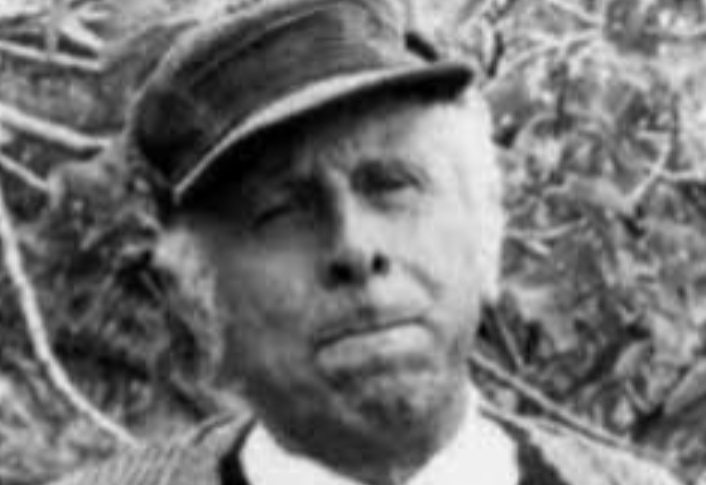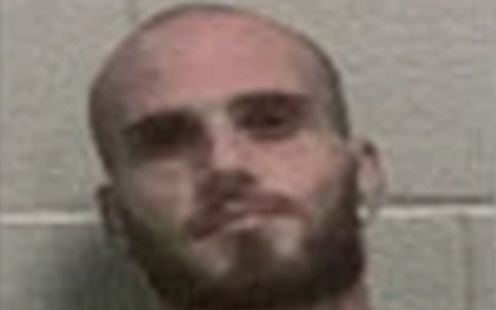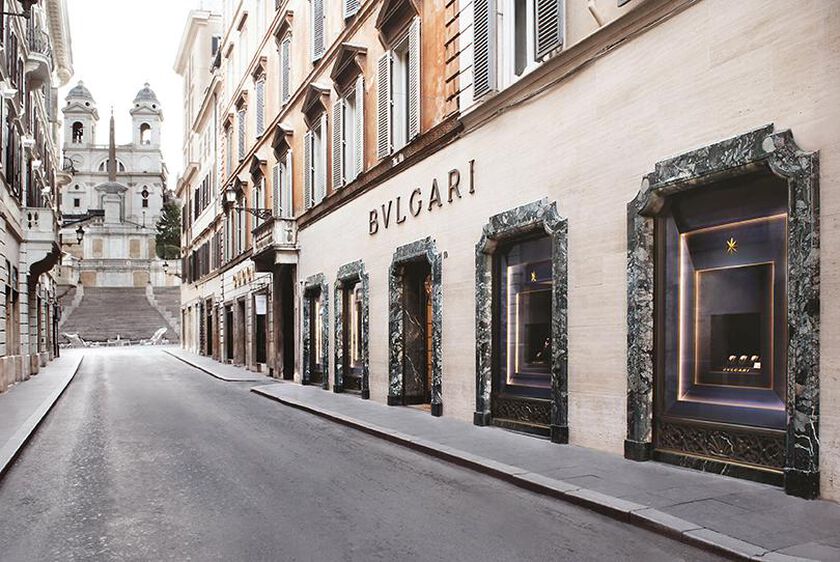By Thom L. Jones for Gangsters Inc.
In 1948 when young Alberto dalla Chiesa, a captain in the carabinieri, the military police, arrives in Corleone, in the province of Palermo, one of the first things he organized is a census of all the families who live in the town of about 10,000. He discovers that every family has associations of some sort to the local Mafia clan, then under the control of one of the leading citizens, Doctor Michele Navarra. He runs a criminal fiefdom that stretched back generations.
It will be the benchmark for setting standards of evil, butchery and chaos as it kills its way to the top of the criminal underworld of Sicily over the last quarter of the twentieth-century.

On a cold, winter afternoon, January 26 in the year 1978, a man visits a tobacconist in the Piazza Garibaldi in this strange, unsettling town up in the hills above Palermo. His name is Ugo Triolo. Of slender build and average height, he is balding at the age of fifty-eight. A lawyer by profession, he has served as an honorary vice-magistrate for the town of Prizzi, which lies 24 kilometers to the south-east. He was returning home from a visit to a client, a certain Sabella, regarding legal work on an insurance contract.
Triolo is financially sound, with property investments and significant land-holdings. A distinguished gentleman and highly regarded solicitor serving the town and hinterland. Everyone would refer to him as “a decent person.”
After leaving the shop, he and his black poodle dog, Bull, walk up Via Roma for about 300 meters until they reach Piazza San Domenico, named after the ancient church which has stood there since 1554.
Leading off the square is a viccolo, a roofed alleyway, running into the street which lies to the south and parallel to Roma called Via Cammarata. As Hugo exits onto the road, he is facing his house at number 49, which butts onto a dingy, very narrow thoroughfare called Rua del Piano, almost opposite the alley.
At this time of the year 5.40, it is dusk and the streets are full of shadows, real and imaginary.
Hugo presses the intercom on his front door, and his wife, Lea Tamburello, hears his voice, then the sound of multiple gunshots. Her teenage son, Dario, who had been waiting to meet him at Piazza Domenico, after visiting his aunt nearby, hearing the gunshots, rushes down the viccolo and finds his father sprawled in a pool of blood.
Ovid saw the Greek word chaos as original disorder and formless mass. On that dark street, on that dark night in that dark town, nothing expresses what is happening, except chaos. Dario rushed to get help from a nearby Forestry Guard’s barracks, as his mother kneels to cradle her husband’s limp body. The first responders arrive and soon people crowd the area. Police cars are zipping about everywhere. They rush Hugo to Corleone’s Bianchi Hospital, which is three minutes away, and at 6.05 that evening doctors there confirm his death.
Someone shot him seven times in the head and body with the gun or guns held just a few inches away. The killers were standing in the shadows of del Piano, and had simply to step out onto the street and fire. Even at that distance, they still apparently missed with two rounds. An autopsy carried out by Professor Caruso determined Triolo died because of extreme internal hemorrhage of the left lung and heart. It is apparent that two different weapons were used, as the bullets recovered had different striations.
His killing will link into the past and the future, like some Dostoevsky interpretation of the bewildering awareness of human cruelty. In a town where there have been dozens, even scores, perhaps hundreds of murders throughout the 20th century, the cruelty of the events are only matched by the realization that almost all will go unsolved. Whatever else can be written or said about the Mafia, the one really indisputable fact is that for the hard stuff, no one can match them.
One of the first reporters on the scene is Palermo-based Mario Francese. An investigative journalist for the Giornale di Sicilia, he was, perhaps, the first to realize how salient Salvatore Riina is. At this time, he is acting boss of the Corleone Mafia, regent for Luciano Leggio, in prison for life since 1974.
READ: La Primula Rossa: The Story of Luciano Leggio (Part 1)

Francese will work for years, researching and writing about the growing Mafia power emerging from the small town in the middle of nowhere, in the hills above Palermo, and how important Riina and his henchmen are within the criminal underworld. He will be the only journalist to interview Ninetta Bagarella, the girlfriend of Riina, in 1971, when she is working in the town as a schoolteacher. She has a brother, Leoluca, who will become one of the most infamous killers on the island.
On January 26, 1979, almost at the same time as the previous year, someone shot dead Francese outside his home in Via Campania, Palermo. His killer is Leoluca Bagarella, the same man who, without a doubt, murders Ugo Triolo. It’s not the first in his biological family.
In 1945, someone killed his uncle, Liborio Ansalone, a police officer, while he was crossing Piazza Niascè on his way home to Via San Martino, 600 meters away from the crime scene of Ugo Triolo. A murder that remains a cold case to this day, like almost all victims involving the Mafia in Corleone, where streets and squares and alleys form an endless pattern linking in the violent deaths of those that cross them.
There will be an exception, but that lies seventeen years in the future. It involves Leoluca Bagarella, as do so many murders in the Mafiaopolis of Sicily. He’s there that night in January, on the cold, rainy evening, in the penumbra of Via Cammarata. A keystone in a story with many options but few real disclosures.
READ: Corleone: Murders in a Small Town.
At first, investigators believe the murder of Triolo connects somehow to that of another homicide that had taken place in Corleone on January 16, the assumed murder of Marco Puccio. Investigation links his death into a series of killings and at least one disappearance, which happens over the previous year and appears to be connected to abigeato, the smuggling of livestock, a criminal specialty that plagued Sicily for generations. Giovanni Ferante, the boss of the Mafia clan in Prizzi, was involved, a man who had crossed swords with Triolo on more than one occasion.
The cattle rustling triggered a series of events resulting in the period from July 1977 to January 1978 in at least three murders and one disappearance. The dead were Giovanni and Antonino Palazzo and Salvatore La Gattuta, and the man who vanished was Puccio, almost certainly killed. La Gattuta was Mafia boss of the clan in Mezzojuso, a small town to the north and east of Corleone.
One gun used to kill Triolo is also linked to the death of Giovanni Palazzo, according to ballistics tests. They used the same gun in the double murder that took place in August 1977, when a quartet of Mafia killers murdered Colonel Giuseppe Russo of the carabinieri and teacher, Filippo Costa, as they walked through the square of Ficuzza, near Corleone, late in the evening. One shooter is Bagarella.
Puccio was being represented by Triolo, and it was suggested this might be the reason the murder took place, to silence any incriminating evidence, connecting to the Mafia of Corleone, who were almost certainly behind the attacks. One thing that was obvious to his family and colleagues was that the lawyer, conscientious in his duties and untainted by local criminals, on any level, was an honest man.
As law enforcement investigations drag on, it becomes obvious this is a murder with intent. Capitano Antonino Russo, in charge of the carabinieri’s inquiry, realized that the killers had stalked their prey from the tobacconist, knowing his routine, and were ready, loaded and locked, when the target reached his destination. But who and why?
The answer to the first part emerges three months after the murder. It comes as part of a disclosure from a most unexpected source, the testimony of a Mafia boss.
READ: In Search of the Corleonesi.
Giuseppe Di Cristina was the capo of Reisi in the province of Caltanissetta, in the south-east of Sicily. The Corleone mob was after him, first framing him for the killing of the Catania Mafia chief, organizing his murder in Di Cristini’s territory, then in November 1977, ambushing and killing two of his men. The hit men were Giovanni Brusca, a made-man in the San Giuseppe Jato Family, Bagarella and a man called Antonino Marchese, a soldier in the Corso dei Mille Family of Palermo.

Di Cristina meets up on the night of April 16, 1978, with a captain in the carabinieri (military police) in a disused cottage out in the countryside, near Reisi, and lays down a story that confounds the veteran cop. The Mafia boss is known as “tiger” because of his irascible character. This evening he comes as a kitten scared of the dark.
Most men in the Mafia exist on the essence of gossip, as nothing gets written. Its perfume wafts them through their miserable lives, edging them along the dangerous roads they have to navigate. Their daily lives are filled with trivia and a lot of deadly information. The man at the top of the tree gets the most whispers and scandals of all.
As part of his unburdening of his life and sins, he let drop the lawyer shot dead in Corleone earlier in the year is a victim of the local clan. The killers were two mafiosi, Bagarella and Marchese.
They were waiting on the street that night, in the intersection of Cammarata and del Piano, which was the alley that housed the family home of Salvatore Riina, at this time, on the run from the law.
Bagarella’s sister, Antonietta, has married Riina the previous year. Nino Marchese’s brother, Giuseppe, is the driver and bodyguard for Riina. Their sister, Vincenzina, will marry Bagarella in 1991. It’s a lot to take in. But classic Sicily and Mafia relationship churn. The biological family attachments is often the glue that holds clans together.
The establishment of who is involved, although never developed into a legal investigation, makes it important to decipher the message by focusing on the why, because everything in Cosa Nostra is full of meaning. That will come, but not for some years.
One theory grows around land. And water.
Ugo Triolo had vast landholdings in the Poggia San Calogero Valley whose waters would feed a proposed dam. The Corleone mob aimed to receive a cut of any future profits that may arise from building and contracting. They wanted this land, so they could control the Piano Campo dam if construction went ahead.
All crimes other than street or domestic, in Sicily, if not executed, are controlled by Mafia influence. Imperceptibly linked, understanding one often depended on information gathered from another. Di Cristini’s revelations of the lawyer’s killers could lead police into a quantitative forward leap, provided they allowed themselves that freedom, which, regretfully, never happened. They did not act on his confession. Filed and forgotten.
It would take another pentito, a government collaborator, to open up a new direction. Another Mafia boss, this one with the most unusual distinction of dying, not by the sword, often the usual Mafia way, but from Covid, in a Paris hospital in April 2020.
Francesco Di Carlo was capo of his own little kingdom in Altofonte, a small town to the south of Monreale. He would also become a central figure in one of Italy’s biggest banking scandals, and the murder of Roberto Calvi, who was found dangling under Blackfriars Bridge in London, in 1982.
READ: Five Minutes to Midnight.
When he switched sides to work for Team Italy, among the small mountain of information he provided was the reason Ugo Triolo died that cold winter night in front of his home in Corleone.

In May 2001, in his statement to the public prosecutor in Caltanissetta, Di Carlo (right) claimed he had been present in the office on Via Di Vinci, in Palermo, that belonged to Giovanni Vallone, a successful building and transport contractor, and witnessed a heated discussion between Bernardo Provenzano and Vallone, who requested that the Mafia kill Triolo.
Sixty-five-year-old Vallone was a Mafioso from Prizzi, the same town where Ugo had exercised his powers as an honorary magistrate. Provenzano was the number two under Riina, although one day in the future, would himself become the big boss of Corleone and the Mafias of Sicily.
The Vallones had been a power base in the small town, east of Corleone, for generations, a place regarded by law enforcement as always in the control of the Mafia. Since the reign of Don Silvestre ‘Sisi’ Gristina, murdered in Palermo in 1921, there had existed a legacy of unrest and terror among the six thousand inhabitants living under the control of literally a handful of mafiosi.
Across many decades in Corleone and Prizzi, there had developed familial reproduction of the mafia, and many surnames are repeated with a continuous regularity. It confirms the of hypothesis of Carlo Alberto Dalla Chiesa in drawing up his family tree that showed just how deeply ingrained the organization had become within the structure and society of the town.
According to the testimony of Di Carlo, Vallone demanded that Provenzano dispose of Triolo because he was causing him problems in his business activities, carrying out investigations into Vallone’s dodgy constriction activities. Di Carlo recalled Vallone saying, “He is a lawyer. He should do what the villagers say, not the law.”
Following Di Carlo’s testimony, Giovanni Brusca would also confirm that someone had tasked Provenzano with arranging the murder of Triolo. He claimed that Bagarella and Marchese almost always acted in pairs, and were the “go to” hit men used by Corleone in the late 1970s. According to Tony Calvarusso, a close aide, “Bagarella has always killed, doing the job with love. He often said to me, God knows they’re the ones who want to get killed. And I’m not to blame.”

Brusca was as close as anyone could get to Riina. He was the one who pressed the button, detonating the bomb that killed Giovanni Falcone, his wife and his bodyguards in 1992. The infamous Capeci Massacre. After his arrest in 1995, he rolled like so many of his peers, disclosing details of his life and times, working as the boss of San Giuseppe Jato, Riina’s closest Mafia ally.
Within the world of the Sicilian Mafia, it regarded them as canazzi da catena, chain dogs.
Known as “The Christian Killer,” Brusca was one of the mob’s most prolific exterminators, admitting to murdering between one and two hundred victims.
READ: Three Good Men.
In 2003, Judge Giovanbattista Tona, in charge of preliminary investigation at the Court of Caltanissetta, carries out a review into the murder of Ugo Triolo, but after a thorough review, finds on July 7, lack of solid evidence to indict and prosecute the five suspects: Salvatore Riina, Bernardo Provenzano, Leoluca Bagarella, Antonino Marchese and Giovanni Vallone.
Everyone knew who did it and why, but after twenty-five years it was a case for the archives rather than verdict and appeal.
The fatal flaw, the dark crack running down the middle of life, that visits us all, would come to destroy Riina and Provenzano, Marchese and Bagarella, and their lives will end in prison cells, or hospitals, somewhere across Italy. Bagarella is the only one left, living out his days at eighty-three, under the strictest life sentence in Sassari Prison in Sardinia.
Tommaso Bedini Crescimanni, the nephew of the murdered lawyer, in paying tribute to his uncle, said,
“Ugo Triolo is one of those little-known victims who fought the cancer of the mafia by simply doing their job, without fanfare, sacrificing their lives and demonstrating that in the same territory that developed the disease, Corleone, there were also honest Corleonesi that fought the disease until the end.”
Thirty-eight years after the murder of Ugo Triolo, a federal commission dissolved and replaced the Corleone town council because of Mafia infiltration.
They are still there, in the shadows. Always ready. Always waiting.
Sources:
La Repubblica. Corleone, the Lawyer who never gave up. 9 March, 2019.
Città Nuova. Corleone. Remember Triolo.
Vittimafia.it/26-gennaio-1978-corleone-pa-ucciso-ugo-triolo-ricepretetore-onorario-di-prizzi/
PalermoToday. The murder of the journalist Francese. 44 years ago. 26 January, 2018.
Cairn.Inf0, 2001. Volume one, issue one. The ethnologist and the magistrate.
Corte Di Assise. Di Appello. Palermo. 2nd Session, 13 December, 2002.
Tribune Di Caltanissetta. Dicreto Di Archiviazione, art, 409, 411 c.p.p. 7 July, 2003.
Stampacritica. The mystery of the unsolved murder of Ugo Triolo. 15 February, 2018.
Semplicemente Passioni Forum. Ugo Triolo. 11 April, 2012.






Leave a Reply